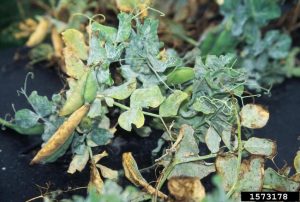This week has been the hottest week of the summer. We’ve been starting earlier to try and beat the sun, but by midday the heat is oppressive and makes any task difficult. But, the the heat-loving plants have thoroughly enjoyed the rays and are taking off!
Tuesday
On Tuesday, I arrived an hour late, which I am going to actively avoid in the future! We got right to work weeding in the high tunnel as this past weekend the weeds took off around the peppers and eggplants, who were being slightly choked out. It appears the purslane especially enjoys the heat underneath the high tunnel.
Once it became too hot to be under the high tunnel, we set out taking down the snap peas. They had decreased in production with the high temperatures and had begun to also show signs of powdery mildew, or Erysiphe pisi. It generally affects peas in late in the summer as the pathogen favors humid and hot temperatures ( Best management practices include choosing resistant varieties, crop rotation, as well as sowing timing. TJ selected resistant varieties. It doesn’t seem to be a large issue at the farm and only requires preventative measures.

I think this is important to remember when researching and preparing for plant pathogens. Oftentimes it is a natural part of farming and it isn’t necessary to try and eradicate the pathogens. They can even be indicators of systemic issues on the farm, such as inadequate crop rotations or variable watering schedule. However, when pathogens start killing large percentages of crops, which can be the case of clubroot, this is when more measures must be taken to suppress the diseases.
After pulling out the peas, we pulled bolted lettuce from the high tunnel as well. Both of these went into the compost as feedstocks, layered in with partially decomposed woody material. Already the two compost piles we created last Tuesday have decreased dramatically in size! Early in the morning the next day, the compost pile was steaming and was at a toasty 140° F.

Wednesday

On Wednesday, we harvested kale, lettuce, green and yellow beans, and tomatoes for the CSA. Over the weekend, the tomato trellises had collapsed under the weight of the flourishing plants and had to be propped back up. While a sign of very happy tomato plants, it makes for an incredibly difficult time to harvest and find the tomatoes through the jungle of vines.
We also chatted about compost tea and what the design for the aerator will be. TJ has decided to started with a five gallon bucket design and use the TEALab Bubble Snake aerator. Considering the general application rate of compost tea is 20-25 gal/acre, five gallons will cover .2 acres of space and will most definitely be adequate for TJ’s application plans. I intend to have a post all about the recipe decided upon as well as the general compost tea process in preparation for the Soil Health workshop next weekend.

